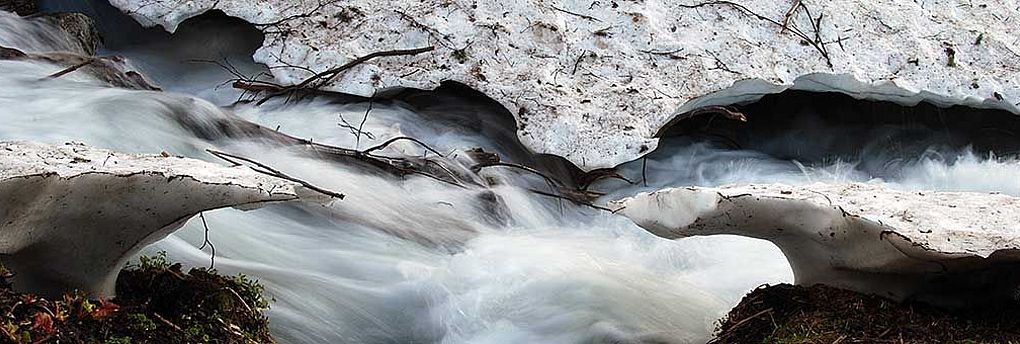
Floods
Intense, prolonged rainfall can lead to flooding. There are other factors, however, such as snowmelt, that play a significant role in causing flooding. High snowmelt rates combined with heavy rainfall can give rise to critical flood situations.
Flooding is when the water level or discharge in a body of water reaches or exceeds a certain threshold. Mountain torrents, rivers and lakes are no longer able to absorb the volume of water and burst their banks. When critical levels are reached, factors such as terrain and the permanent and temporary protective measures in place determine the severity of a flood.
We study snow in terms of its function in the hydrological cycle and run an operational snow-hydrological service (OSHD). One of the key questions in snow hydrology is how much snow is present in a research site and when and how much of that snow will run off as snowmelt. As the snow thaws, the extent, height and thickness of the snowpack changes. The OSHD continuously monitors the spatial and temporal distribution of snow water resources in Switzerland, and in doing so helps to improve hydrological forecasting and long-term water resource management.